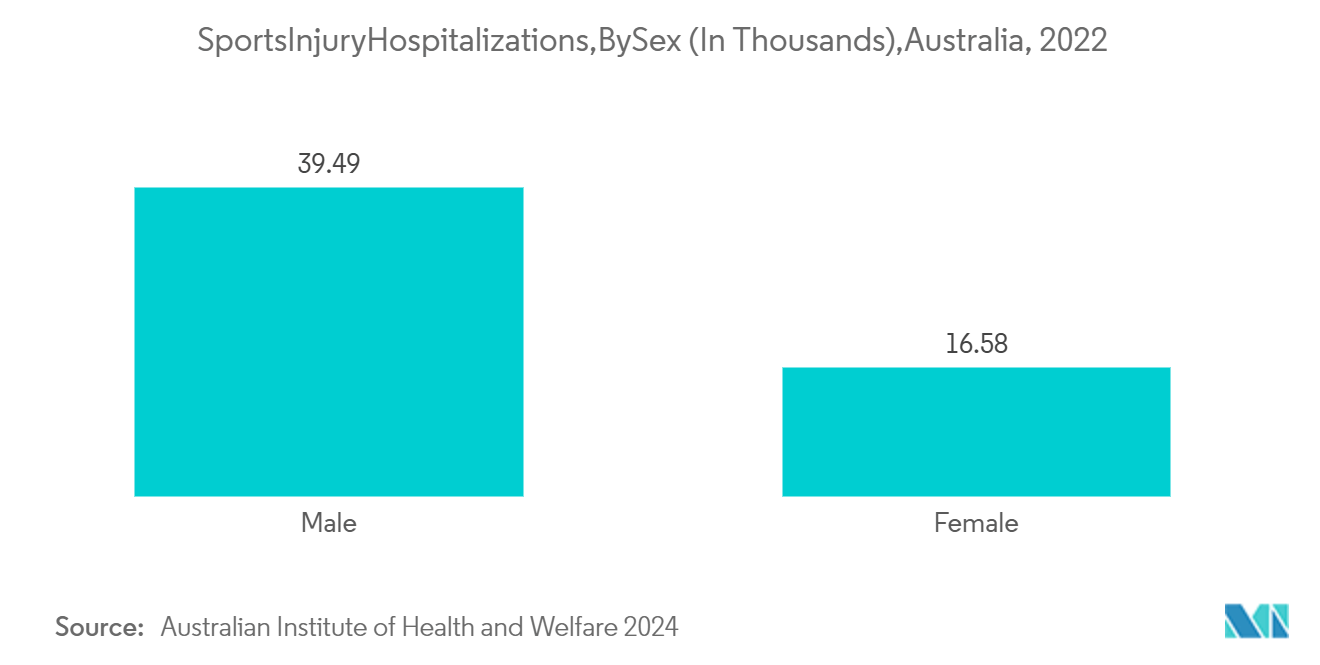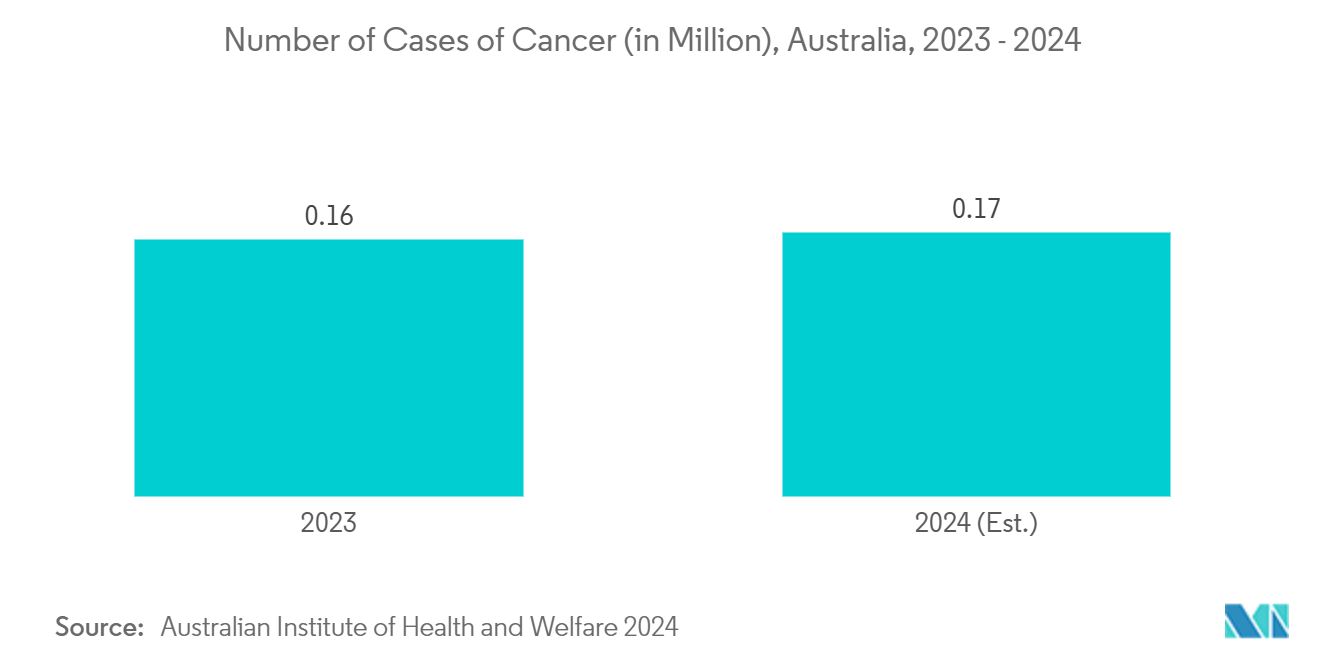Market Trends of Australia And New Zealand Diagnostic Imaging Equipment Industry
X-ray Segment is Expected to Witness Considerable Growth Over the Forecast Period
An X-ray is a noninvasive medical test that aids in diagnosing and treating medical conditions. Imaging with X-rays involves exposing a part of the body to a small dose of ionizing radiation to produce pictures of the inside of the body. Rising fractures and chronic diseases are expected to drive the segment's growth. In addition, the growing burden of dental disorders has further contributed to the increased demand for radiographic equipment such as X-rays to image dental issues accurately.
Therefore, the rising burden of dental disorders in Australia is expected to boost segment expansion over the coming years. For instance, a report published by the Australian government in November 2023 stated that approximately one in three Australians over 15 years had untreated dental decay, and 42% of children aged 5 to10 years experienced dental caries in their deciduous teeth. This burden signifies the need for radiographic methods such as X-rays to image dental lesions precisely. Hence, the rise in the burden of dental disorders is expected to propel market growth over the forecast period.
Moreover, the growing burden of osteoporosis and bone fractures in the country is further projected to propel the demand for X-rays, and this is ultimately projected to drive segment growth over the study period. For instance, according to data from the Australian Institute of Health and Welfare, in June 2024, around 853,600 (3.4%) Australians were living with osteoporosis, which is associated with low bone density. This high disease burden of osteoporosis signifies the higher demand for X-ray modalities to diagnose bone-related issues and assess the risks of fractures accurately.
Furthermore, various developments undertaken by market participants to bolster the uptake of X-ray and associated services in these countries are further expected to boost segment market expansion. For instance, in November 2023, Pearl and Gamma Tech partnered to distribute X-ray services incorporated with artificial intelligence-based software second opinion in Australia and New Zealand. This AI-powered software tool will help detect dental disorders like tooth decay and bone loss.
Similarly, the growing adoption of advanced and new-generation X-ray systems by healthcare facilities is further expected to contribute to the enhanced demand for X-ray systems. For instance, in July 2024, Alpine Health upgraded its medical imaging capabilities and invested in new X-ray equipment to offer better diagnostic services for society. Such instances are expected to propel industry uptake over the study period.
Therefore, the factors mentioned above, including the role of X-ray in detecting critical musculoskeletal and dental disorders, coupled with growing demand for new-generation products, are expected to boost segment expansion over the study period.

Oncology Segment is Anticipated to Witness Considerable Growth Over the Forecast Period
The increasing number of cancer cases in Australia and New Zealand is one of the major drivers for the segment. MRI, computed tomography, ultrasound, mammography, and nuclear imaging are widely used for the detection of cancer like solid tumors and hematological malignancies.
The significant burden of cancer cases across Australia and New Zealand is expected to propel the demand for diagnostic imaging modalities. For instance, according to an article published by the Journal of Otolaryngology-Head & Neck Surgery in June 2024, head and neck cancer (HNC) was diagnosed as a profound burden across the Pacific. New Zealand also has a high burden of such solid tumors, with 500 to 550 new cases annually in a population of 5 million people. This high disease burden translates to the demand for imaging modalities to track and position tumor size and design a targeted treatment approach.
In addition, according to the data published by the Australian Institute of Health and Welfare in August 2024, around 21,000 cases of breast cancer are anticipated in females for 2024, constituting about 28% of all estimated female cancer diagnoses. Breast cancer ranks as the second most diagnosed cancer for Australians aged 20 to 39 and 60 to 79, while it stands as the most prevalent for those aged 40 to 59. This trend highlights the robust demand for imaging modalities like ultrasound, nuclear medicine, and CT scans to facilitate effective cancer detection.
Furthermore, the launch of new medical imaging facilities to transform overall research activities in oncology is further expected to bolster segment uptake over the study period. For instance, in December 2023, the Australian National Total Body PET Facility opened in Sydney. This facility has increased diagnostic imaging rates and helped in cancer research activities. Thus, such efforts are expected to drive segment uptake over the forecast period.
Thus, the growing burden of cancer cases in Australia and New Zealand, the increasing number of diagnostic imaging procedures, and the openings of new medical imaging facilities are expected to boost market growth over the forecast period.


